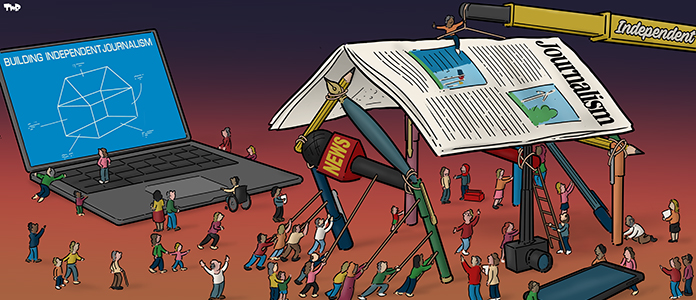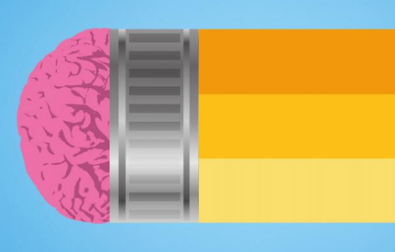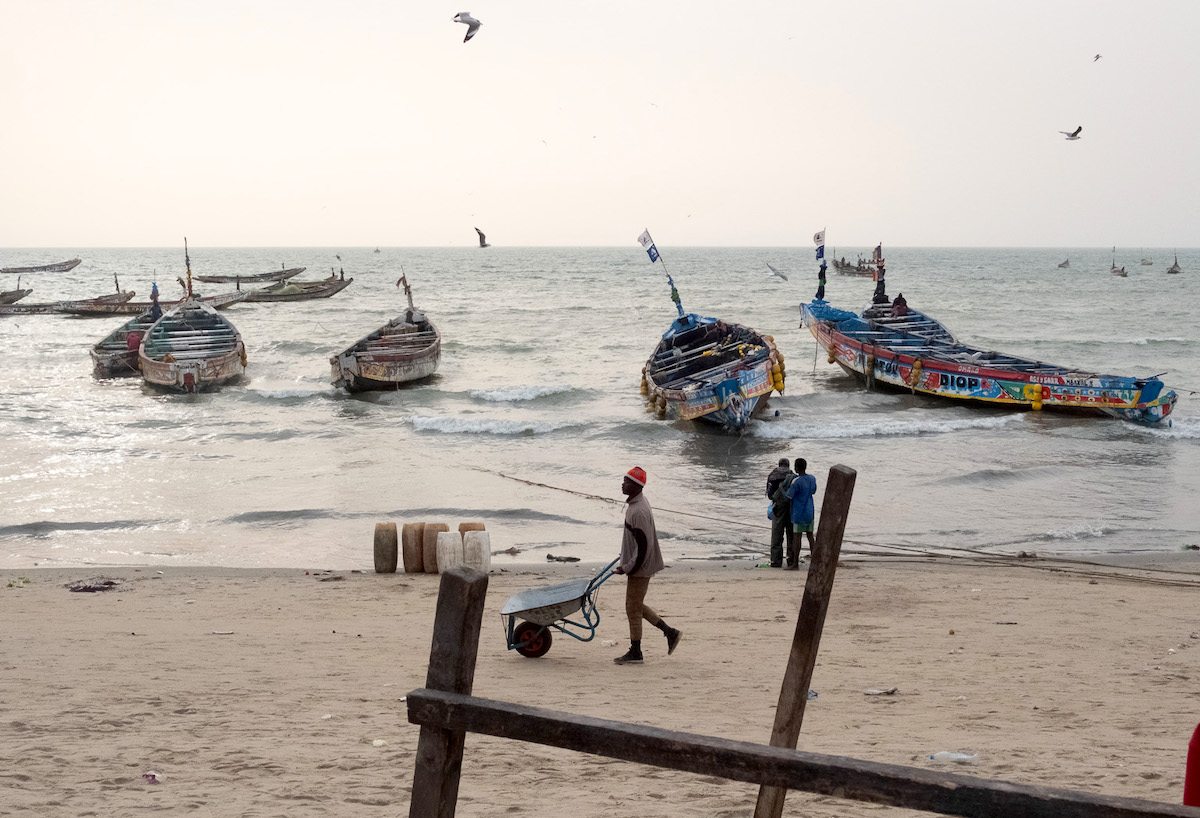Night settles over the Gambian coast, and four fishermen drift in their wooden canoe, several kilometres from shore. Having cast their nets near How Ba beach, in the country’s narrow stretch of tropical waters, they now wait. In a few hours, they will haul in their catch and pack the fish into boxes filled with ice.
Then, in the dark, two small navigation lights – red and green – appear on the horizon, gliding silently closer. At first the fishermen assume it is another canoe. But within seconds the sea erupts in a brutal impact. A steel trawler, the Majilac 6, has slammed into their rickety boat, shattering it. The trawler, weighing several tons, presses on without stopping, its lights extinguished, and disappears into the dark.
The collision takes place roughly six nautical miles from land. Of the four Senegalese fishers on board, two die almost immediately. The youngest crew member, 14-year-old Bubakar M’Baye, is left clinging to the wreckage with his cousin Assan, 25. For hours they hold on, battered by the waves. But as the night wears on, Assan’s grip loosens. Surrendering to exhaustion, he drifts off into the swell.
When dawn finally breaks, another canoe of fishers comes across Bubakar, gripping the keel of what is left of his boat. He is pulled out alive.
The disaster of the Majilac 6, during the night of 7-8 March 2024, is not an isolated tragedy. It is part of a pattern: industrial trawlers trespassing in The Gambia’s inshore waters, which are reserved for artisanal fishing.
Across West Africa, the competition for fish has grown fierce. Industrial fleets, often Chinese or European, are trawling deep and close to the coast, eroding local stocks and encroaching on the livelihoods of small-scale fishers. Local crews are forced to push further and further out to sea, chasing dwindling catches. The struggle is relentless and it is becoming deadly.
According to satellite data collected by Global Fishing Watch, which tracks large vessels to check for illegal activity, at least four trawlers from the Majilac fleet appear to have continued fishing illegally within The Gambia’s nine-nautical-mile coastal limit – a zone reserved for artisanal boats under national law. The catches from these incursions are later unloaded at the port of Banjul, the capital, where certain species are sold locally or exported to neighbouring countries such as Senegal.
But not all the fish land at the main port. Up the Gambia River, beyond the mangrove swamps near Banjul, trawlers pull in at a discreet dock operated by Hansen Seafood, a processing company.
Directly in front of this secondary dock, a rusting vessel is moored. Its name, painted faintly on the hull, reads Majilac 2. Nearby, two other trawlers sit in dry dock, undergoing repairs. On their lifebuoys, the word Majilac can still just be made out, though the boats themselves have been freshly repainted.
We are visiting a year after the deadly Majilac 6 accident. At the entrance to the building, three flags flutter above the gate: Italian, Spanish and Gambian. An employee we encounter outside explains that the managers are not on site. He insists the Majilac vessels are owned not by Hansen Seafood but by a Chinese company.
In fact, the trawlers themselves do not belong to the processing plant. Hansen Seafood is owned by the Spanish conglomerate Congelados Maravilla, headquartered in Vigo, one of Galicia’s seafood hubs. The company is among the region’s leading importers, distributing wholesale across Europe, primarily to Spain, Italy and Portugal.
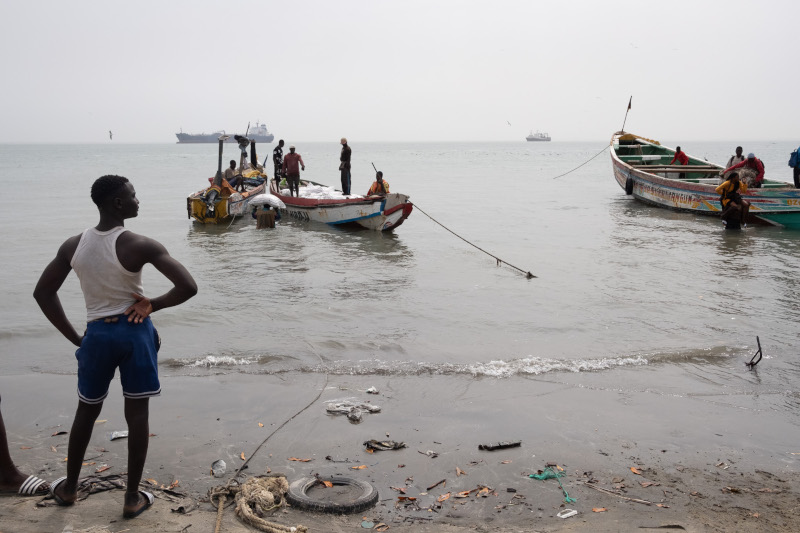
Its founder, Giuseppe (or José) Mellino, is an Argentinian businessman of Italian descent. He announced the acquisition of the Gambian company in 2022. The Denton Bridge plant, located at the gateway to Banjul, is billed by the Galician group as one of the largest seafood-processing facilities in West Africa and the biggest in The Gambia. Tons of octopus, cuttlefish and assorted fish are packed there daily for export.
When contacted for this investigation, Congelados Maravilla denied owning the Majilac vessels. The company states that since last year it has sourced seafood exclusively from local artisanal fishers. But it does not deny having previously bought and exported products from the Majilac fleet, insisting that those purchases were part of agreements already in place when it took over Hansen Seafood in 2022.

This means that at least until last year, the company was packaging and exporting fish caught illegally in Gambian waters. Roughly 30 percent of these exports went to Italy, while more than half were shipped to Vigo – often routed through the Portuguese port of Leixões, about 150 kilometres south of Vigo. In 2023 alone, at least 520 tonnes of frozen fish arrived in Spain from the Denton Bridge plant, at a time when Hansen Seafood was fully under Congelados Maravilla’s ownership and still receiving regular shipments from the Majilac fleet.
About 80 people are employed at Hansen Seafood’s processing and cold-storage plant. The fish they handle comes from the exclusive economic zone of Africa’s smallest mainland nation. The company claims that the new Spanish management has conducted a sweeping renovation since the facility was acquired from Chinese owners in 2022: upgrading infrastructure, installing modern machinery and improving labour conditions for a workforce made up largely of Gambians.
When Congelados Maravilla announced the acquisition that year, it declared an annual processing capacity of up to 5,000 tonnes of seafood. Yet in an email response to questions for this investigation, the company said the actual volume ranges from 800 to 1,000 tonnes. To put that in perspective: given the EU’s average per-capita fish consumption – around 23 kilograms a year – the plant’s output is enough to supply only around 40,000 Europeans.
For The Gambia, the stakes of fishing are high. The river Gambia’s nutrient-rich waters, which empty into the Atlantic, have made the former British colony a prime fishing ground. But that abundance has also turned the country into one of Africa’s hotspots for illegal fishing. For years, NGOs and international agencies have called attention to the problem. But vested interests run deep, and the state has struggled to defend its marine resources against the twin pressures of foreign fleets and local corruption.
“These trawlers are a menace. Incidents happen every single day, yet the foreign vessels are never held accountable”, says Omar Gaye, of the Gambian Artisanal Fishermen’s Association. As a fisher himself, he knows the risks firsthand. He had to file a complaint after a trawler from the Majilac fleet tore through his nets one night, leaving them in shreds.
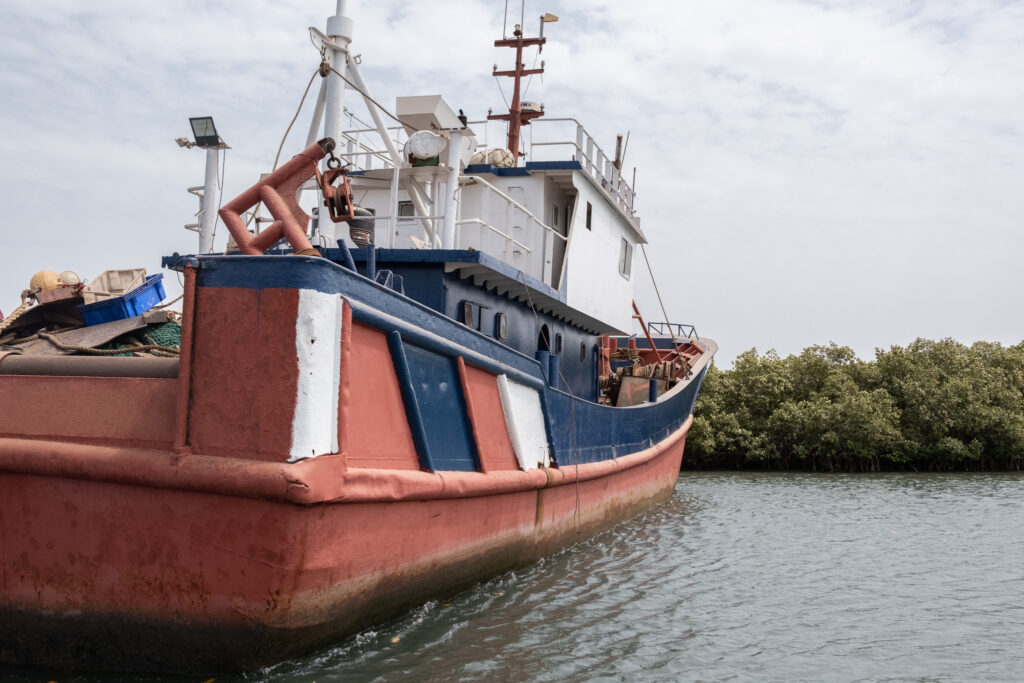
National shipping records confirm that Majilac Fishing Company, which runs the fleet, is controlled by a mix of Chinese shareholders and Gambian nationals.
For the authorities, the Majilac trawlers are hardly new adversaries. In 2019, when the fleet still operated under the Hansen name, four vessels were caught fishing illegally just 4.5 nautical miles off the coast – less than half the legal limit. Each vessel was fined roughly €11,700.
Yet the incursions have continued. In March 2024, the Gambian navy launched a new enforcement operation, this time in collaboration with Age of Union, a vessel operated by the environmental group Sea Shepherd. Over the course of the patrol, seven industrial trawlers were detained while fishing illegally close to shore, in waters where dozens of wooden canoes work day and night.
Among the vessels rounded up in the March 2024 crackdown, four belonged to the Majilac fleet. All were using illegal nets with mesh so fine that they scooped up small species – tiger prawns, shrimp, cuttlefish and more – well below the legal catch size. Yet the joint patrols between the Gambian navy and Sea Shepherd have not discouraged these trawlers from returning to illegal fishing once released.
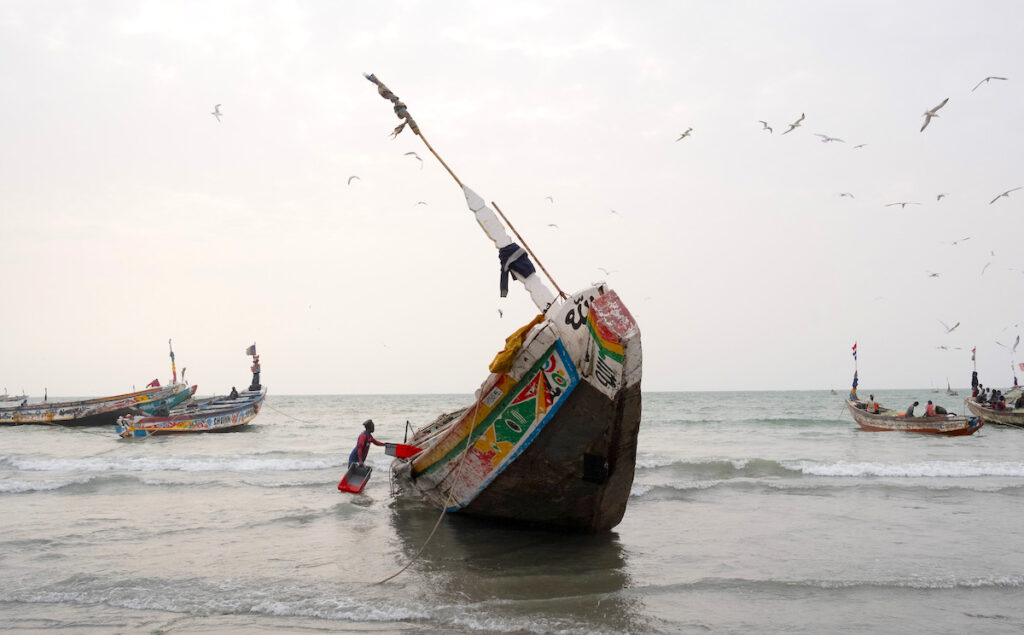
Meanwhile, the Sustainable Fisheries Partnership Agreement (SFPA) remains in force between the European Union and The Gambia. Under the deal, the EU pays The Gambia €550,000 a year in exchange for access by European vessels to catch-limited quotas of high-value species such as tuna and cod. Half of that sum is supposed to be earmarked by the Gambian authorities for developing the fisheries sector. It is intended to pay for monitoring, policy work, and enforcement against illegal fishing.
In practice, however, several trawlers – including the Majilac 3 and Majilac 7 – along with other Chinese-flagged vessels, continue to operate illegally inside the nine-nautical-mile coastal zone reserved for artisanal canoes. At times, they edge to within just three miles of the shore. Satellite data shows that these same trawlers continue to dock at Hansen Seafood’s facilities to this day.
In response to questions for this investigation, Congelados Maravilla reiterated that it stopped purchasing seafood from the Majilac trawlers a year ago. Still, the vessels continue to unload their catches at the company’s dock under earlier agreements. The firm insists that all fish landed at their dock is now bought by other wholesalers, and that not a single octopus or cuttlefish is currently purchased by the Spanish group.

“Here in The Gambia, there are about 5,000 canoes devoted to artisanal fishing, heading out to sea every day”, says Omar Gaye, of the Artisanal Fishermen’s Association, underscoring the trade’s social importance. “The trawlers do whatever they want. The evidence is right there for everyone to see. I don’t understand why no one stops them.”
The scale of the problem extends far beyond The Gambia’s shores. Illegal, unreported and unregulated (IUU) fishing accounts for one-fifth of global fish catches, according to the Financial Transparency Coalition. Its market value is estimated at between $10 billion and $23.5 billion annually. West Africa alone is believed to represent roughly 40 percent of this total. The result is a loss of more than $9 billion for countries in the region, in addition to shrinking biodiversity and the depletion of a vital source of protein for West Africans.
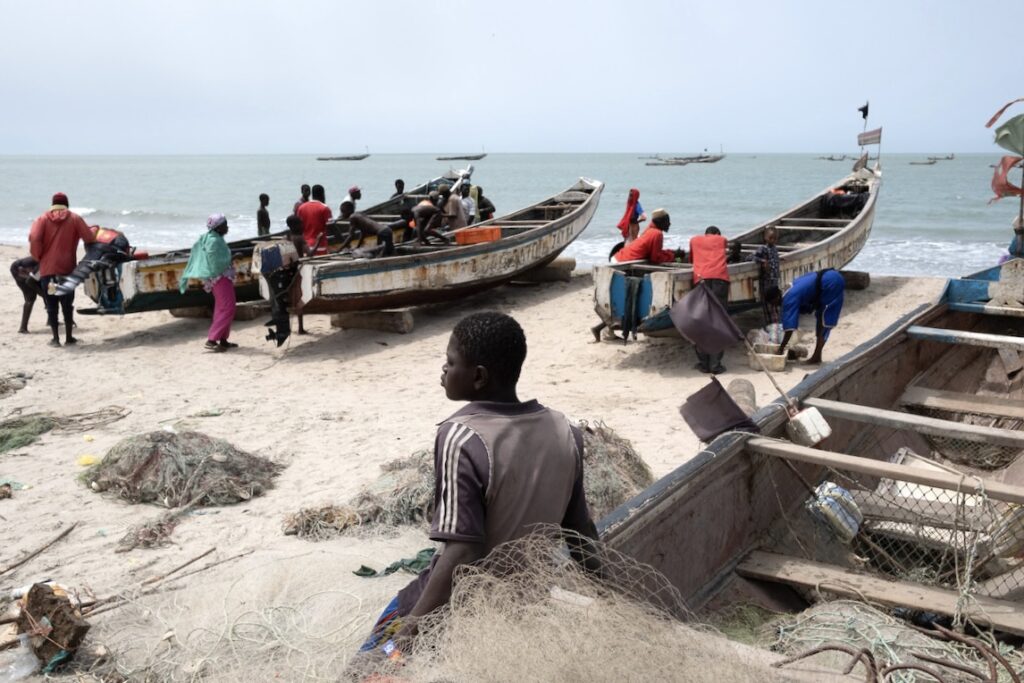
Under European law, all fish imported into the EU must be accompanied by a catch certificate specifying where and by which vessel it was caught, thus guaranteeing that it was not taken illegally. The responsibility for issuing those documents lies with national authorities – in this case, the Gambian state.
The fishermen involved in the Majilac 6 incident were all from Saint Louis, in northern Senegal, including Bubakar and his father, Mussa. “We come back once a year, during the Tabaski festival, to be with our families”, Mussa M’Baye explains. Fishing waters near Saint Louis are now overexploited, making it difficult to compete with both local canoes and the foreign industrial trawlers that have long plied the Senegalese coast.
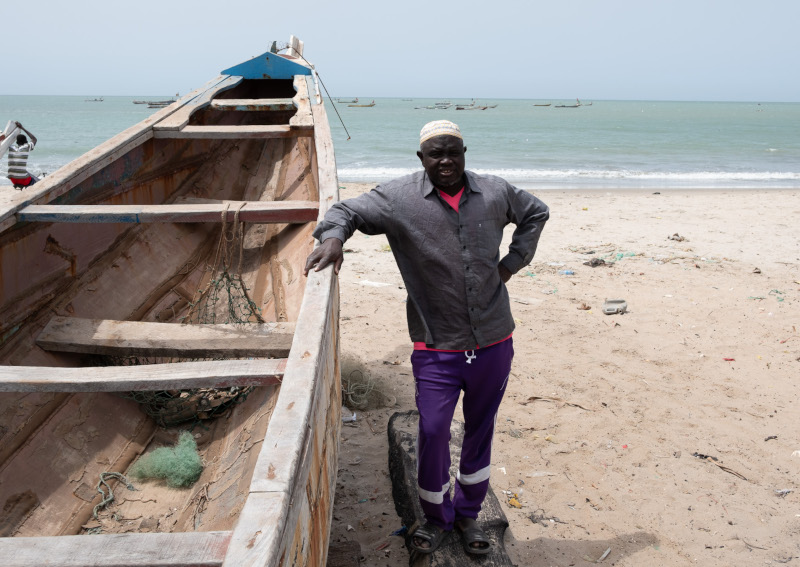
In The Gambia, by contrast, Senegalese fishing communities face less competition – although that balance is shifting. Mussa and Bubakar live in the coastal village of Sanyang, alongside other fishermen from neighbouring countries, particularly Guinea Conakry and Senegal. The Economic Community of West African States (ECOWAS) has a deep tradition of fishing.
The depletion of West Africa’s fish stocks is pushing the region’s coastal dwellers to seek livelihoods elsewhere. It is fueling migration toward the European Union, most notably the perilous route to the Canary Islands.
Along the beaches near Tanji, dozens of canoes are being readied for multi-day fishing trips. The boats’ holds are stacked with ice-filled sacks to preserve the catch. Local fishermen are unloading their hauls directly onto the shore, where the fish is sold. Many here complain about the large trawlers that slip in at night, tearing through their nets. The losses can amount to thousands of euros.
The daily catch from the canoes is mostly sold at local markets for consumption within The Gambia. A part of it is transported in refrigerated trucks to markets in Saint Louis and Dakar.
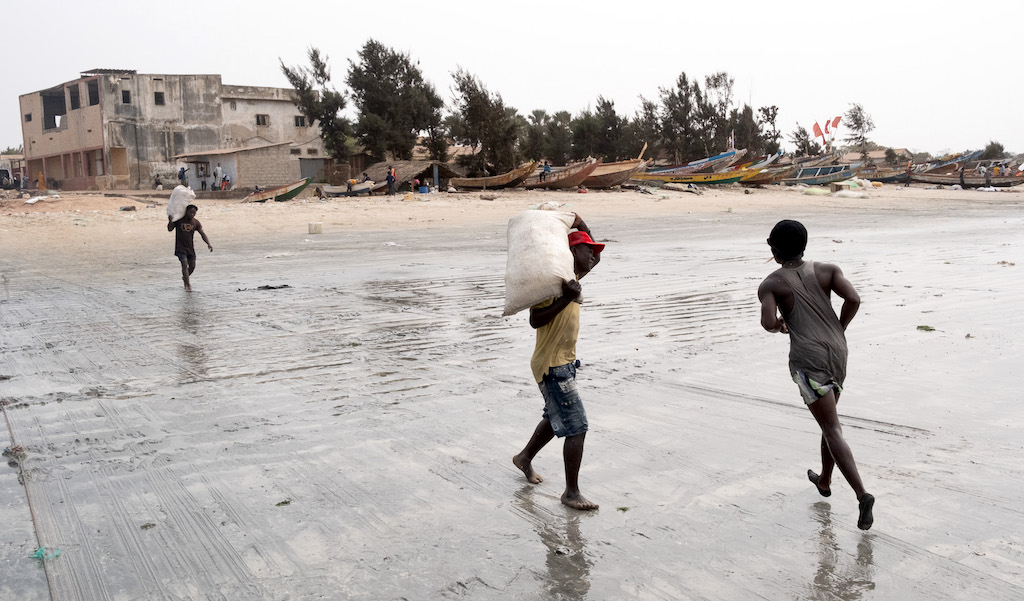
Mussa M’Baye is weighed down by a feeling of responsibility to the families of the three fishermen who died in Saint Louis during the Majilac 6 incident. He owned the ill-fated canoe. Hassan, one of the dead, was his nephew.
As of this report, neither the owners of the Majilac 6 nor its captain have faced any consequences for the fatal accident.
Meanwhile, the damaged canoe has been rebuilt and is back at sea. Even young Bubakar, though obviously still traumatised by that night, has returned to fishing. He is trying to find his place on a sea that is increasingly crowded, contested, and dangerous.
🤝 This reportage is supported by the Pulitzer Center’s Ocean Reporting Network
Do you like our work?
Help multilingual European journalism to thrive, without ads or paywalls. Your one-off or regular support will keep our newsroom independent. Thank you!






